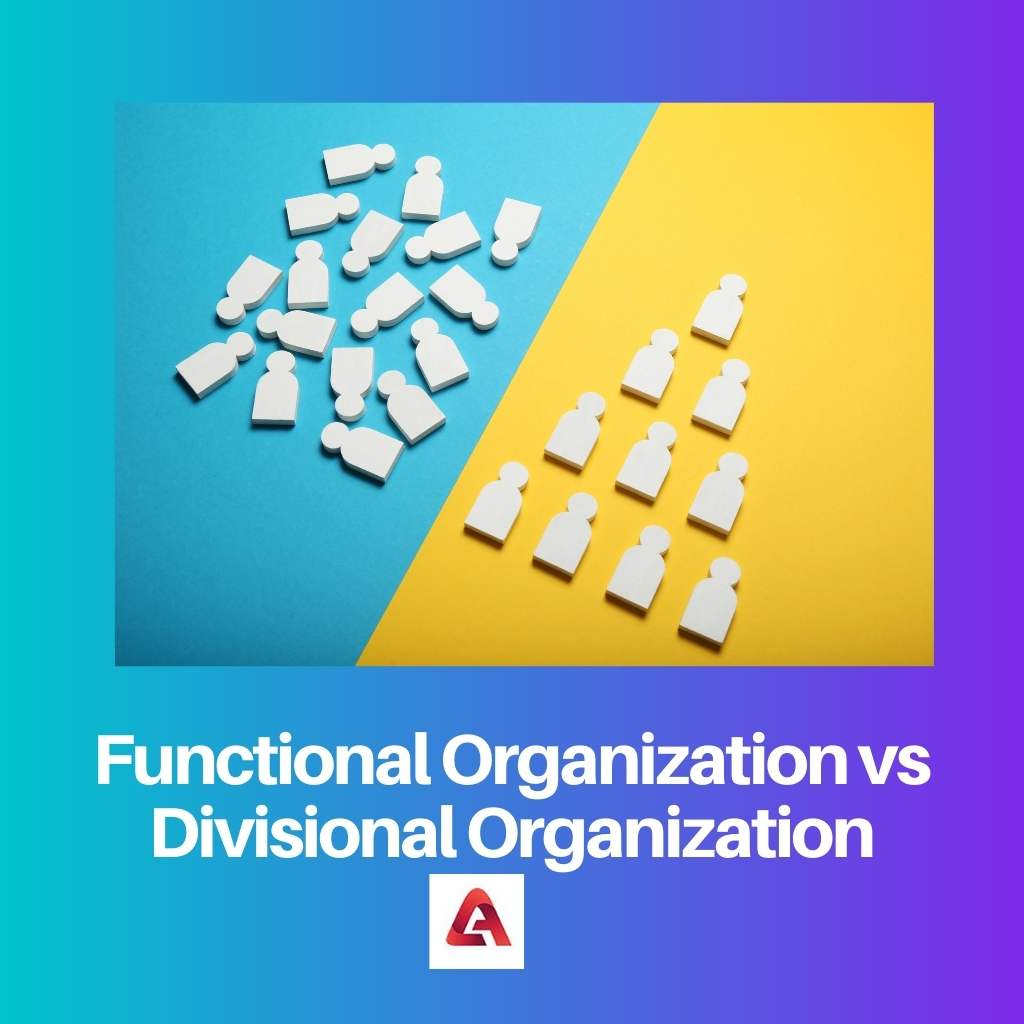Organizing is one of the most critical systems in the life of people. Organizations are groups. It can be a group of businesses or people that are put together to conduct the activity smoothly.
An organization has numerous types. Two of the most important types include functional and divisional kinds of organization.
The fact that work is concerned with functionality, whereas the region where the company functions helps to determine the latter.
Key Takeaways
- In functional organizations, employees are grouped according to their specific skill sets.
- In divisional organizations, employees are grouped according to the products, services, or geographic locations they are responsible for.
- Divisional organizations may be more flexible and adaptable to changing market conditions.
Functional Organization vs Divisional Organization
The difference between fictional organizations and division organizations is that the functional type of organization divides or groups people according to the various functions they follow. They are primarily a hierarchical form of division. Divisional organizations, on the other hand, divide the people according to the services they provide at a particular location or production.

In a functional structure, it can be said to divide a company according to its different functions. All functions would later work together. This is a prevalent form of organizing.
As the people who do the same work are put together, they perform their function with a more significant effort. Also, the results will be beneficial as there is a scope for gaining knowledge from working with people in the same department.
In the case of the divisional structure, most companies that have a vast coverage come under it. They have divided the company into many divisions. Based on the similarity of locations.
Each part has its own set of people working for it, and they further form smaller units for functioning it. It can somewhat be said to include the functional organization within it.
In simple terms, they would divide the branches of the company according to the location or products.
Comparison Table
| Parameters of Comparison | Functional Organization | Divisional Organization |
|---|---|---|
| Form of division | These divide people based on their common function | These divide people based on common location or products |
| Cost | It is cost-effective as the resources are used by a team | It needs a high cost as individual resources to have to give to the mixed team |
| Done in | It is mostly done in small organizations | It is done in big and widespread organizations |
| Management | There is only one manager heading everyone | Each division has a different manager |
| Inclusion | It is included within the organizational form | It includes functional organization within different divisions. |
What is Functional Organization?
This is a widespread type of organizational process. Speaking in simple terms, here, one organization divides its people into several different teams. Each team has a specific function that they have to perform.
In a team, there are a group of people who do a similar kind of work. They all work together and learn from each other, which thus helps the administration to perform without any glitches.
This is primarily seen in places where the size of the organization is smaller. Also, it is concentrated only in a specific geographical location.
Here each division is again subdivided and is placed ahead. However, there is only one person who is the manager of the whole organization.
It has many benefits, as the first division of labour takes place efficiently, and everyone performs well. Second, they learn from each other. The third is they can share their resources, and thus it is economically beneficial.
At last, as everyone has only one function to perform, they do it without pressure and with good efficiency.
There are also some disadvantages, which include there may be conflicts as everyone would have a different suggestion as to how a thing should perform.
Secondly, if they are unable to perform the job, then there will be significant difficulty and confusion. This is a good way of organizing people, and there are more pros to it than cons.

What is Divisional Organization?
It is a type of organization that divides its various branches according to the location in which they operate. It is mostly done as a widespread and big organization. Here every department is headed by a different manager.
Each divided part consists of subdivisions that have their functions.
Also, resources are divided accordingly. Here there is one parent company, and all the divisions have the same name and brand as their parent. They are only differentiated based on location.
This has many advantages. The first is as a manager is assigned to each division, they would lead the group, and the functions will be conducted smoothly.
Also, as a particular division is present in a specific area, they can know the wants and demands of the people of that region. Also, it helps to make a large number of different products. It is quicker as everyone works together to create the job possible.
However, there are also certain disadvantages. The first is that it is not very cost-effective because the number of resources would have to be significant.
Also, there might be inefficient functioning among the members and a lack of competition that would make them sluggish.
It has more pros than cons. Most of the famous companies all over the world use this type of division in their different branches.

Difference Between Functional Organization and Divisional Organization
- In the case of a function, the people who have the same function are put into a group. But in divisional, location and type of product id the type of division.
- Functional organization is cost-effective as a set of resources is shared by everyone. However, the divisional organization is of a high cost because of individual resources.
- The functional form is mostly seen in small organizations. However, the divisional form is seen in larger organizations that are more widespread.
- In Functional, there is mostly one manager who heads the organization.
- The functional type of organization is contained within the divisional organization. However, the divisional organizations contain functional organizations within each of its divisions.




